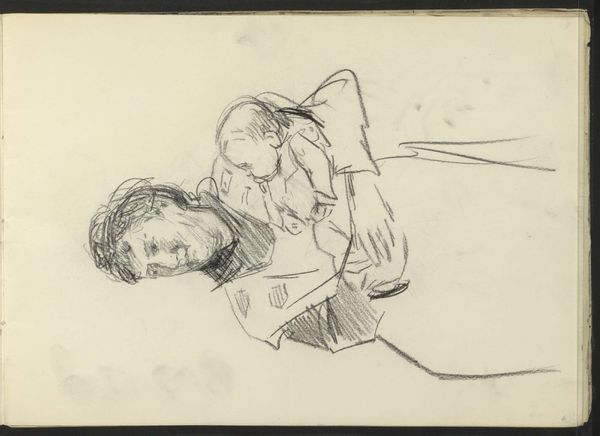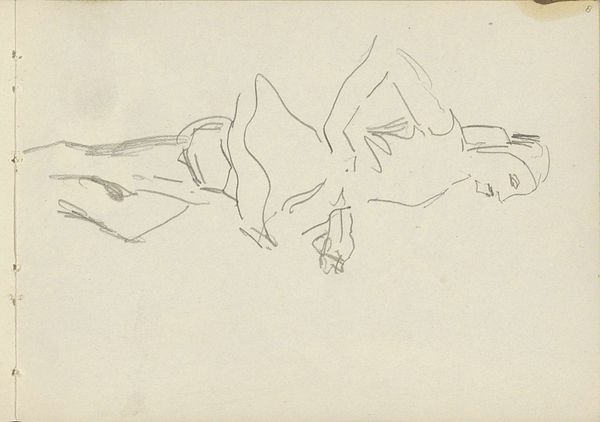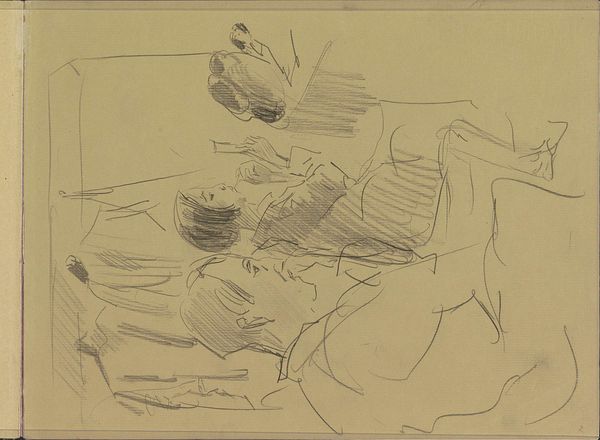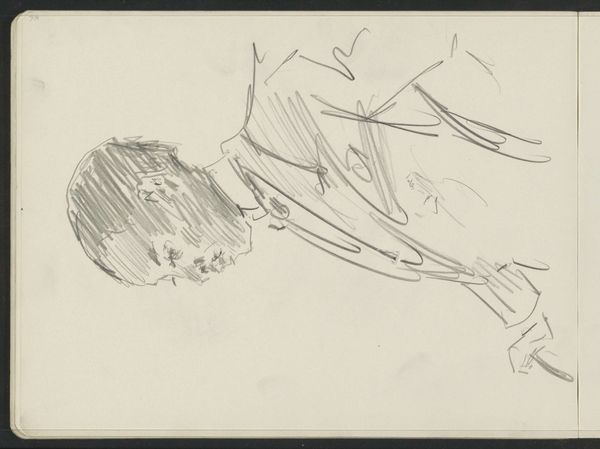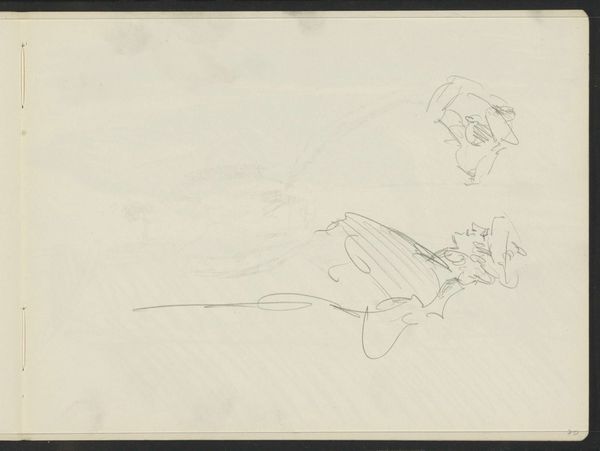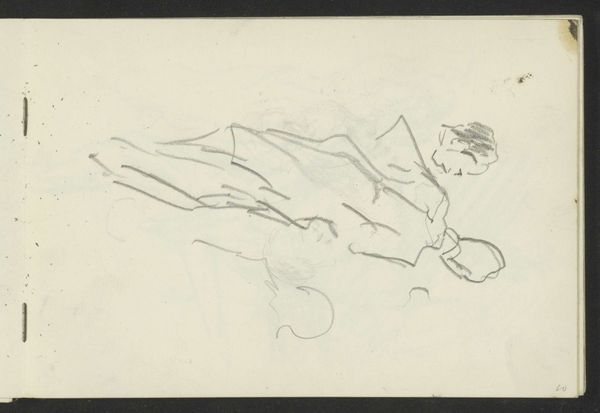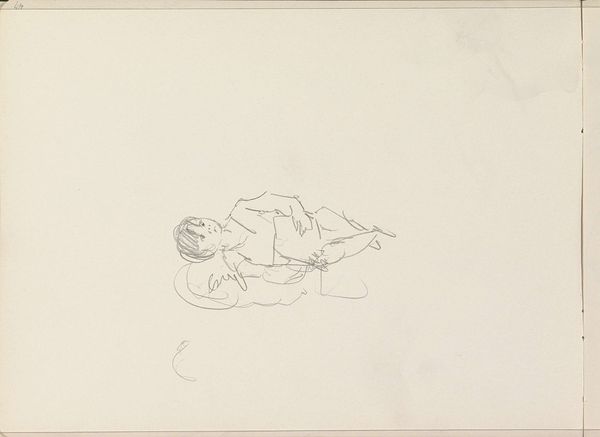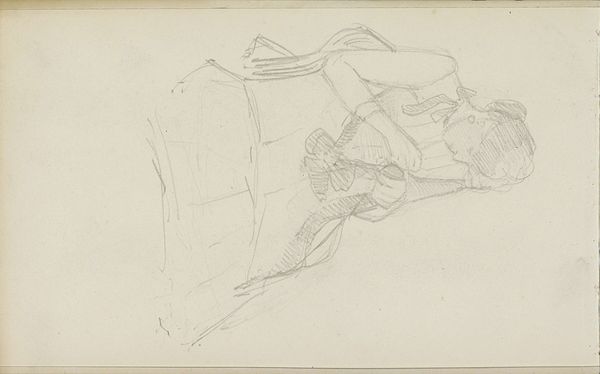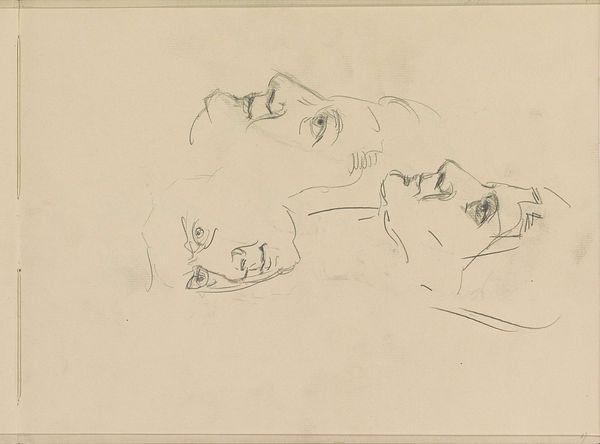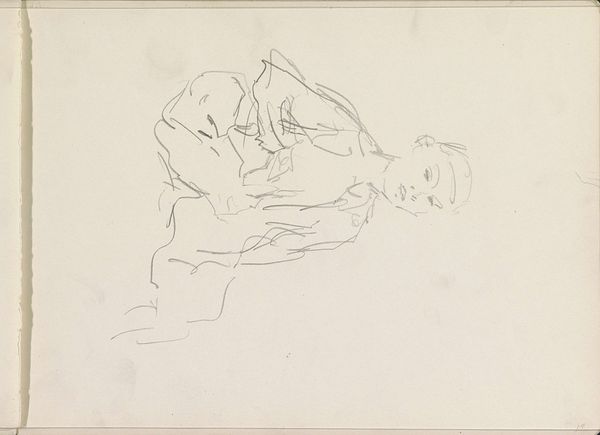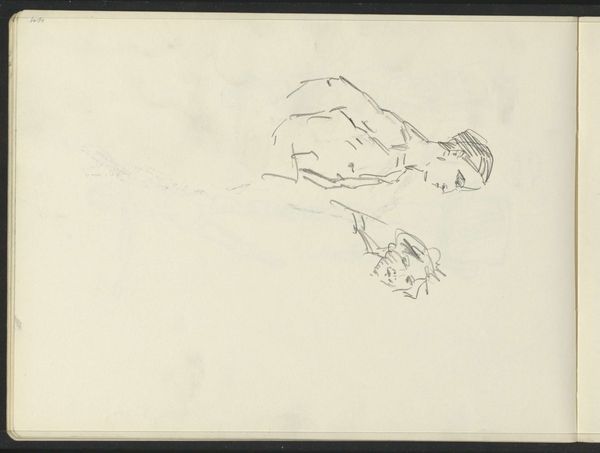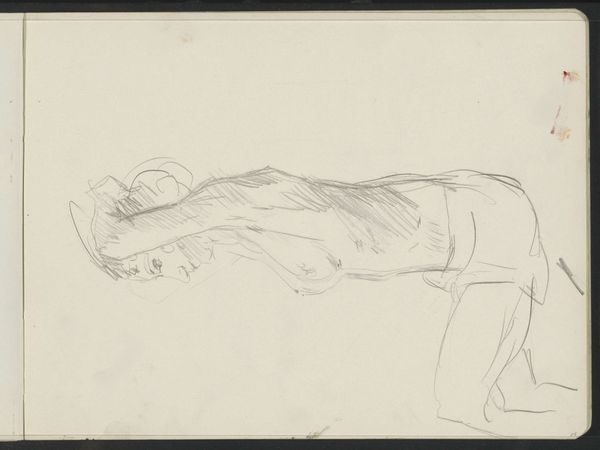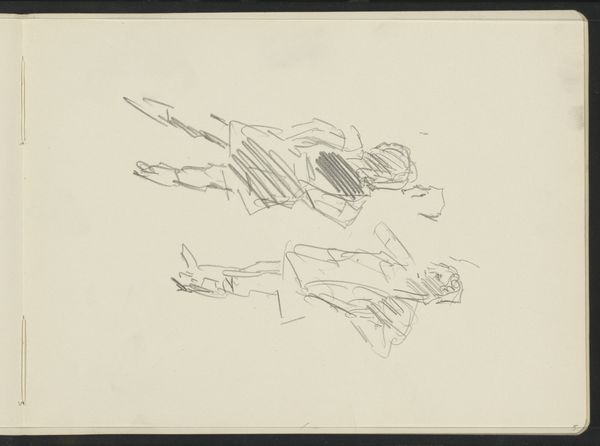
Copyright: Rijks Museum: Open Domain
Editor: This is Isaac Israels’ “Schilderende vrouw,” dating from around the 1910s or 20s. It’s a pencil drawing on paper, and I find its unfinished quality so intriguing, as if we are looking at a fleeting moment. What stands out to you in this piece? Curator: It's the posture, isn't it? See how she’s leaning into the canvas, almost as if mirroring the act of creation with her own body. Consider what that embodies. This intimacy with the artistic process becomes a symbolic gesture – a bending towards understanding, towards shaping one's own reality. It reveals a psychological engagement that transcends mere representation. How does that interpretation resonate with you? Editor: I see what you mean. It's like the artist is physically invested in the painting, not just passively observing. Does that specific posture tie into any particular cultural symbol or ideal? Curator: Absolutely. Think of the persistent trope of the "muse" throughout art history. But Israels seems to be actively dismantling that trope here. This isn't a passive, idealized figure, but a woman engaged in her own artistic agency. It connects with broader shifts during that era towards women's emancipation and participation in the arts. The forward lean symbolizes action, an intent of participating in progress. The drawing, with its sparse strokes, it also conveys urgency. It all resonates powerfully when viewed through that lens, wouldn't you agree? Editor: I do! It really gives the work a new dimension. I appreciate the insight into the symbolism of posture and its cultural context, how even the simplest lines can communicate so much. Curator: Precisely! It's the layered symbolism, drawn from art history, psychology and cultural movements that allow a work to transcend its time and resonate so profoundly even today.
Comments
No comments
Be the first to comment and join the conversation on the ultimate creative platform.
